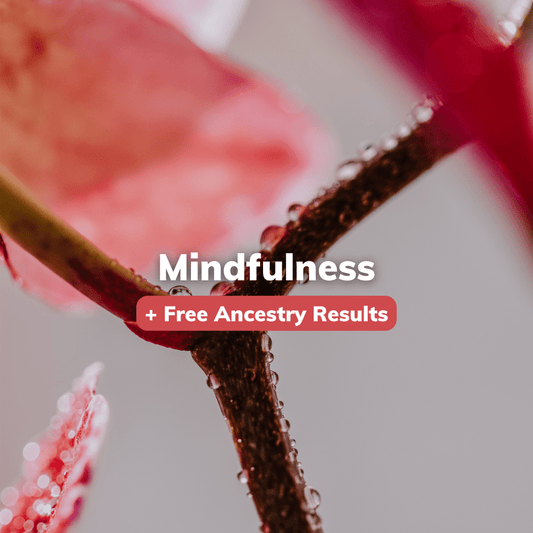
World Cancer Day - Building awareness of the most insidious killer
BioCertica Content TeamWorld Cancer Day is an annual event that takes place on February 4th. The day is dedicated to raising awareness about cancer, and encouraging individuals, organizations, and governments to take action to prevent and fight this disease.
Cancer is a leading cause of death worldwide. According to Our World in Data metrics for 2019, an estimated 20 million new cancer cases were reported; additionally, about 10 million cancer-related deaths. The disease affects people of all ages and backgrounds, and can have a devastating impact on both individuals and their families. Cardiovascular disorders are the only diseases that have been reported to have a more devastating effect on people worldwide.
One of the main goals of World Cancer Day is to reduce the number of preventable cancer-related deaths and raise awareness. This can be achieved through a variety of means, such as promoting healthy lifestyles, increasing access to cancer screenings, and investing in cancer research.
One of the ways individuals can help prevent cancer is by making healthy lifestyle choices. This includes eating a balanced diet, getting regular exercise, and avoiding tobacco and excessive alcohol consumption. It's also important to protect yourself from the sun, and to get regular cancer screenings, such as mammograms and colonoscopies.
Diet
Diet plays an important role in the management of cancer, and can help cancer patients maintain their strength, weight, and overall well-being during treatment. Here are some diet options that can be beneficial for cancer patients:
- High-protein diet: Cancer treatments can cause muscle wasting, and a high-protein diet can help to maintain muscle mass and strength. Good protein sources include lean meats, fish, poultry, eggs, dairy, beans, and nuts.
- Antioxidant-rich diet: Antioxidants are compounds that can help protect cells from damage caused by cancer-causing agents. Fruits and vegetables, particularly those that are brightly colored, are rich sources of antioxidants. Examples include berries, leafy greens, and tomatoes.
- Fiber-rich diet: Fiber is important for maintaining a healthy digestive system, and can help prevent constipation, a common side effect of cancer treatment. Whole grains, fruits, vegetables, and legumes are all good sources of fiber.
- Hydration: It is important for cancer patients to stay hydrated, as it can help to prevent dehydration, a common side effect of cancer treatment. Cancer patients should aim to drink at least 8 cups of fluid per day, and should avoid caffeine and alcohol, which can dehydrate the body.
- Omega-3 fatty acids: Omega-3 fatty acids are anti-inflammatory and may help reduce the risk of cancer recurrence. They can be found in fish such as salmon, sardines, and tuna, as well as flaxseeds, chia seeds, and walnuts.
It is important to note that cancer patients should consult with their oncologist or a registered dietitian to develop an individualized diet plan that takes into account the patient's specific needs and treatment plan.
Exercise
Exercise can be beneficial for cancer patients in many ways, including improving physical fitness, reducing fatigue, and managing side effects of treatment. However, cancer patients should always consult with their oncologist or a physical therapist before starting an exercise program, as cancer and its treatment can affect the body in different ways.
- Aerobic exercise: Aerobic exercise, such as walking, cycling, or swimming, can help to improve cardiovascular fitness, reduce fatigue, and improve overall quality of life. Cancer patients should aim for at least 150 minutes of moderate-intensity aerobic activity per week.
- Strength training: Strength training can help to maintain muscle mass and strength, which can be affected by cancer treatment. Cancer patients should aim to include at least two sessions of strength training per week, focusing on all major muscle groups.
- Yoga and tai chi: Yoga and tai chi are gentle forms of exercise that can help to improve flexibility, balance, and mental well-being. These exercises can be particularly beneficial for cancer patients who are recovering from surgery or who have limited mobility.
- Mindfulness exercises: Mindfulness exercises such as meditation, deep breathing, and progressive muscle relaxation can help to reduce stress, anxiety, and improve sleep in cancer patients.
- Flexibility and stretching exercises: Flexibility and stretching exercises such as Pilates, tai chi, and yoga can improve the range of motion, balance and reduce the risk of falls.
It is important to note that cancer patients should not overexert themselves, and should listen to their body and stop if they feel fatigued or experience any pain or discomfort. They should also aim to exercise at a moderate intensity and gradually increase the duration and intensity of their exercise as they become more comfortable.
Awareness of cancer
Another important aspect of World Cancer Day is raising awareness about the disease. This includes educating people about the different types of cancer, the risk factors, and the available treatments. It also includes highlighting the stories of those who have been affected by cancer, in order to show the human side of the disease and the importance of finding a cure.
In conclusion, World Cancer Day is an important annual event that aims to raise awareness about cancer and encourage action to prevent and fight the disease. By promoting healthy lifestyles, increasing access to cancer screenings, and investing in cancer research, we can work towards reducing the number of preventable cancer deaths and improving the lives of those affected by the disease.
At BioCertica, we offer various DNA tests. You can order your personalized nutrition plan, and fitness DNA kit, which will help you in prevention from cancer and other diseases.
References



